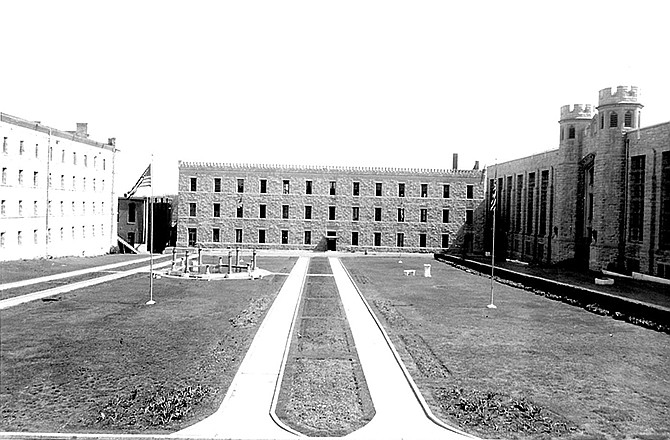The Missouri State Penitentiary's nomination to the National Register of Historic Places was on the agenda to be heard Friday by the Missouri Advisory Council on Historic Preservation. But it was not heard.
Two days before, the state Office of Administration (OA) requested additional time to discuss the nomination with the city prior to this final action, said Ryan Burns, public information officer with OA.
The advisory council is the final stage for a nomination before advancing to the federal Advisory Council on Historic Preservation for approval. The nomination was prepared on behalf of Jefferson City by Camilla Deiber, senior architectural historian with Louis Berger in Kansas City, and paid for by an $11,500 U.S. Housing and Urban Development Community Development block grant through the Missouri Department of Economic Development.
The nomination was a requirement in the 2010 programmatic agreement between OA, the city, the state's MSP Redevelopment Commission, the State Historic Preservation Office and Cole County. The agreement originally was prepared so the city could use a Community Development block grant through the U.S. Department of Housing and Urban Development, which removed several buildings not essential to the MSP Master Plan.
The agreement also said, "Should any signatory to this PA object at any time to any actions proposed or the manner in which the terms of this agreement are implemented, the city shall consult with such party to resolve the objection."
Such is the case here.
"The nomination was removed from the agenda to provide the opportunity for discussion," Burns said in a recent email.
In October 2013, OA had agreed to proceed with the nomination submission.
And in an April 15 email, Burns said OA "continues to recognize the segments of the Missouri State Penitentiary property designated as the "historic area' since the development and adoption of the MSP Master Plan. Preservation of the buildings in the historic area has remained a priority when funding permits. The state will continue to engage the local community as to the desire to carry out the existing MOU (memorandum of understanding) regarding the prolonged use of the property's historic buildings."
Office of Administration officials expect the MSP nomination to be on the advisory council's next quarterly meeting in August.
"As the grant administrator, the city wishes to fulfill its obligations to successfully complete its obligations under the agreements so that the project and the grant may be closed out," said Janice McMillan, director of Jefferson City's department of Planning and Protective Services.
The current nomination focuses on 36 acres under the qualifying criteria of being associated with significant events and embodying distinctive construction.
The city's historic preservation commission reviewed the nomination at its April meeting, where members emphatically agreed the site also is significant on the other two counts - being associated with significant people and the property could yield important historic or prehistoric information.
Eleven contributing buildings and two structures are named in the nomination. Significant dates include 1836, 1868, 1905, 1918, 1938 and 1954, and architects and builders associated include Horace Swift, Eckel and Mann, and Henry Hohenschild.
The primary contributing resources are five housing units, the 1938 corridor, the former J.S. Sullivan Saddle Tree factory, Priesmeyer's Boot and Shoe Factory, the potato house, the smoke stack, the gas chamber, the gymnasium and the boundary wall surrounding the central quadrangle.

